Potting Up Ornamental Alliums With Emily Cupit – They’re Both Simple And Long-Lasting


Elizabeth is a Permaculture Garden Designer, Sustainability Consultant and Professional Writer, working as an advocate for positive change. She graduated from the University of St. Andrews with an MA in English and Philosophy and obtained a Diploma in Applied Permaculture Design from the Permaculture Association.
Reviewed By COLIN SKELLY

Colin is a Horticulturist and Horticultural Consultant with experience in a range of practical and managerial roles across heritage, commercial and public horticulture. He holds the Royal Horticultural Society’s Master of Horticulture award and has a particular interest in horticultural ecology and naturalistic planting for habitat and climate resilience.
Contributions From EMILY CUPIT

Emily is a Gardening Writer, Photographer and Videographer from Derbyshire, UK. She is the Founder of Emily's Green Diary - a community of more than 75,000 people who share in her gardening journey.
IN THIS GUIDE
ALLIUM GUIDES
Container Growing
Deadheading
Pruning
Varieties
Yellow Leaves
Alliums are very useful and attractive bulbs to grow in your garden.
They work very well in beds and borders, but if you are short on space, or have heavy soil not ideally suited to their growth, you might also wonder whether you can grow Alliums in pots.
Can Alliums Be Grown In Containers?
Like other spring bulbs, Alliums can indeed be great container plants.
You can grow them in pots with little work and effort on your part.
They work especially well in mixed container displays alongside other spring bulbs or lower-growing perennials.
Note that when we talk about Alliums we are usually talking about ornamental Alliums, grown for their attractive flowers which bloom in later spring.
Alliums can also be useful in pest control as they can help to repel, confuse or distract a range of pest species with their pungent scent.
In this role, they can work just as well in containers as they do in the ground in your fruit tree guilds, polycultures, or other sustainable organic garden planting schemes.

While most Alliums can be grown in containers, remember that some will grow much larger and taller than others.
Shorter types tend to be best for container cultivation.
Note that some larger, taller types may need some support, especially if they are not grown in a particularly sheltered location.
Choosing Your Container
Alliums tend to look best when planted in as large a clump or drift as possible.
In a container, you can only grow so many, but choosing as large a container as you can generally be a good idea.
This means that you will be able to plant a sufficient number of bulbs to create a pleasing display.
Also, the larger the container, the easier it will be to maintain your display since larger pots will need less frequent watering.
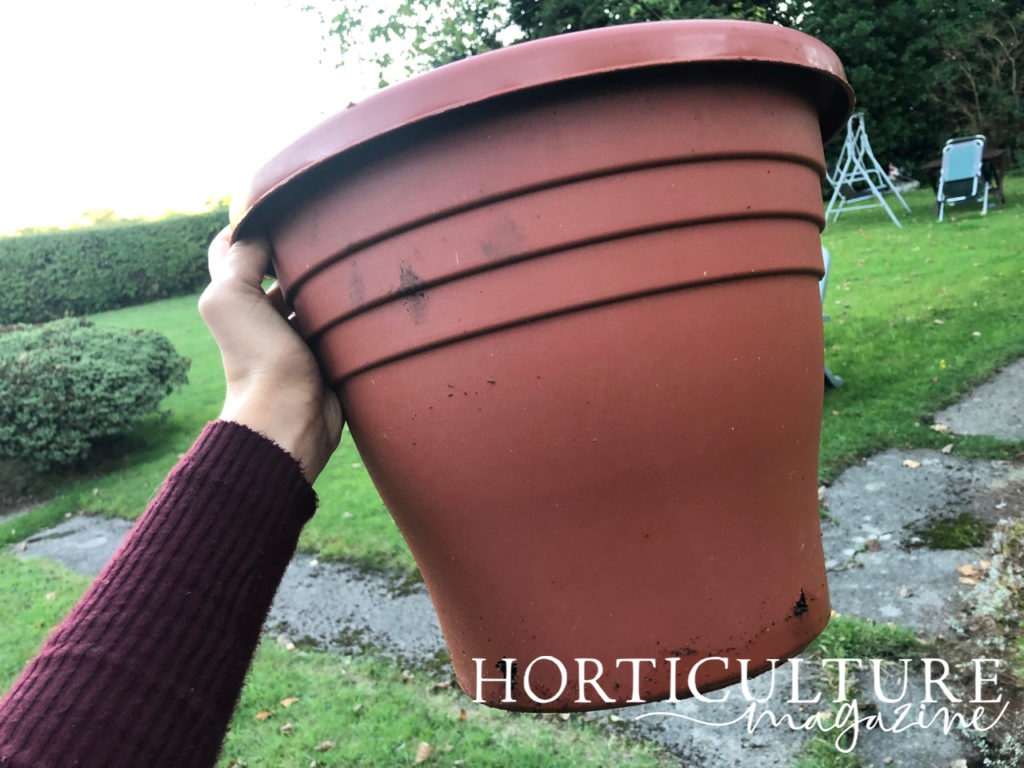
A larger container will also give you more options when it comes to combining your Alliums with other useful and attractive plants.
I would recommend choosing a container with a depth and width of at least 40-50cm.
“If you haven’t got space for a large pot then you can grow some of the smaller species in smaller pots, such as A. moly, A. neapolitanum and A. amplectens,” says Master Horticulturist Colin Skelly.
“These have become some of my favourite late spring bulbs and make as much of a statement as the larger flowered Alliums.”
You don’t necessarily need a container this large to grow Alliums alone, but a larger pot will allow you to create the best displays, and, as mentioned above, make your container garden easier to maintain.
Remember, you don’t have to purchase a container.

You can keep costs down and make an eco-friendly choice by reusing or upcycling items that might otherwise have been thrown away.
When choosing a container for Alliums it is important to remember that they thrive in free-draining conditions, so make sure your container has sufficient drainage at the base for excess water to drain away freely.
Choosing Your Compost
A general multipurpose compost works well for bulbs.
Just make sure, for environmental reasons, that you choose a peat-free option.
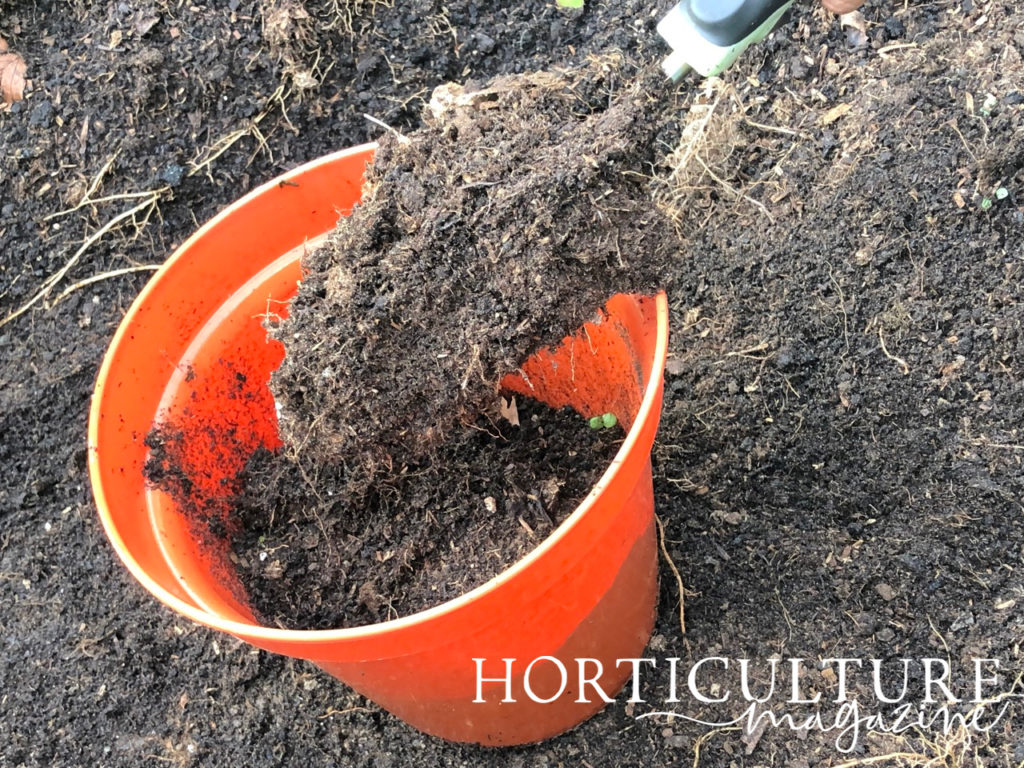
Alternatively, you can make your own potting mix ½ compost and ½ of regular soil, and you can also add materials like leaf mould to the end product.
Your soil should be free-draining as Allium bulbs are prone to rotting.
Potting Up
Ornamental Alliums are one of the spring bulbs which should be planted in early to mid-autumn for best results.
Remember, most Alliums will bloom in late spring and early summer.

When the bulbs will bloom is an important thing to think about, especially if you plan on layering your Allium bulbs with other bulbs to create a bulb lasagne.
Creating a bulb lasagne is a great idea because it allows you to create displays with successional blooms.
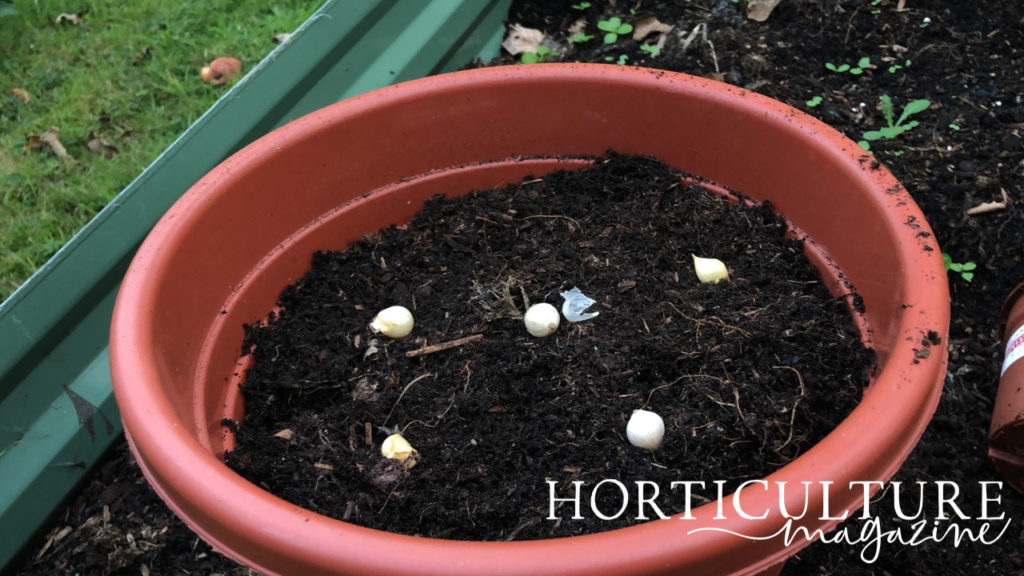
You can first enjoy the earliest flowers of spring, before the next flush of flowers, and then eventually the Alliums arrive.
If you are planning on creating a bulb lasagne, then you do not just have to think about potting up Alliums, but might also think about planting your other spring bulbs in the container at the same time.
First, place around 10cm of your growing medium into the bottom of your container, then plant your Alliums.
The bulbs should be planted at a depth of around four times the width of the bulb.
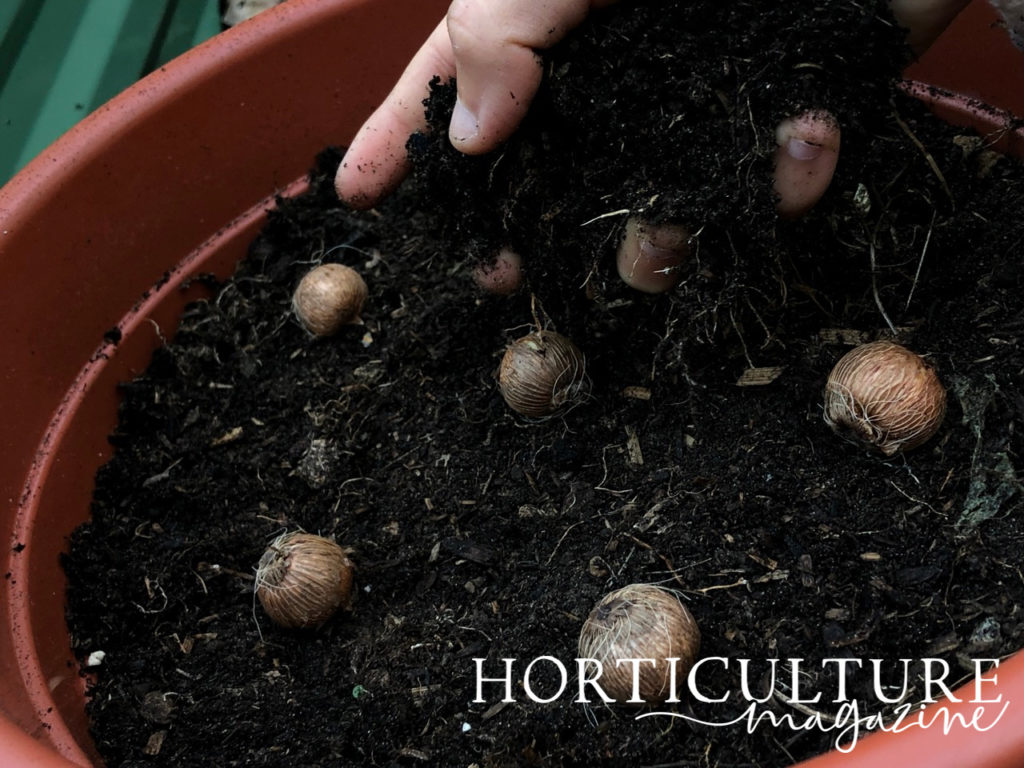
Depending on the variety, the bulbs should be placed around 10-20cm apart.
Next, you should cover these with another layer of the growing medium, then, depending on what else you have chosen to place in the pot, layer in other bulbs in layers, making sure that you don’t place the bulbs immediately above those in the tier below.
Finally, you will cover the final layer of bulbs with your growing medium, and add any bedding plants or perennials you might also have decided to add.
How Many Can You Plant Per Pot?
How many Alliums you place in a particular pot will of course depend on the size of the container you have chosen, and also on what else you are planting along with those Allium bulbs.

Alliums don’t always look great after flowering, so you might choose low-growing perennials to place around the outside of the container.
Adding other spring bulbs that flower before the Alliums can also help make sure that your display lasts longer.
Ongoing Container Care
Place your container in a sunny spot, and over the winter months, make sure it is positioned in a location that will not become too wet.
Placing the pot in the lee of a wall or fence can help make sure high rainfall in winter does not cause bulbs to rot.
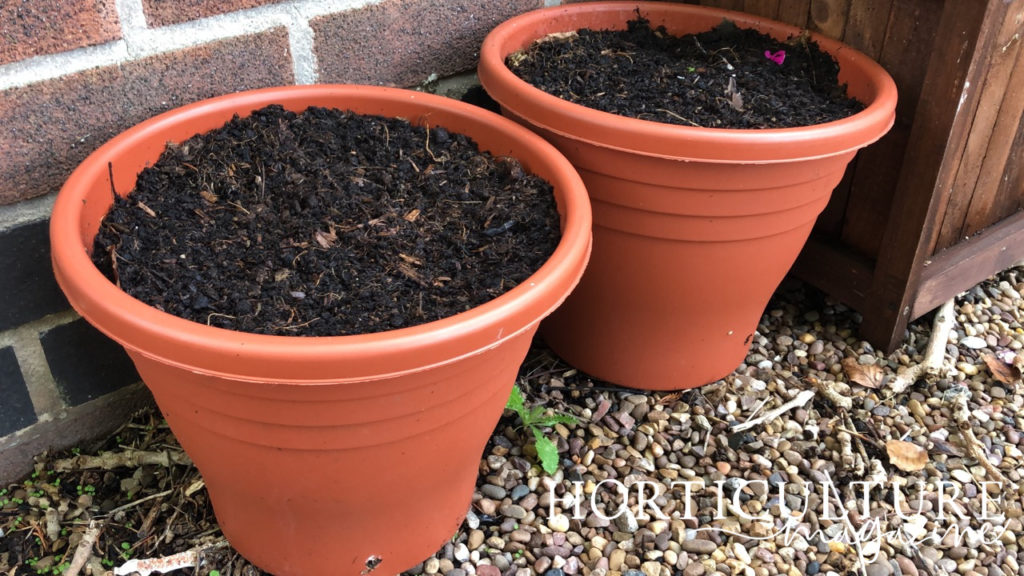
Do not overwater, but make sure you keep your container moist but not soggy throughout the flowering period.
A well-thought-out scheme can flower for 2-3 years before it needs repotting.
Allium bulbs will multiply and can be lifted in late autumn or early spring and repotted elsewhere.
